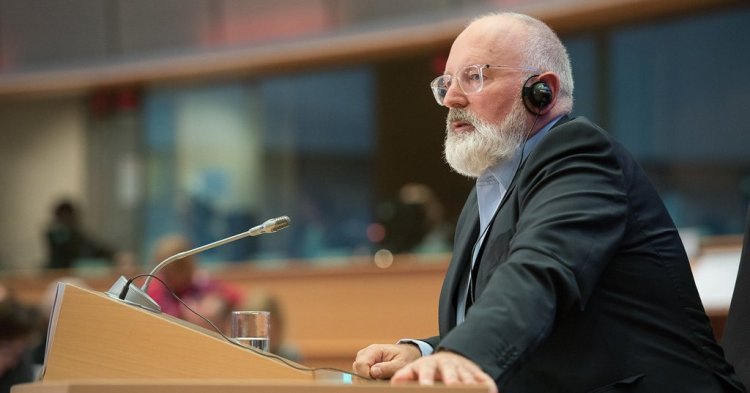I recently participated in a study trip to Brussels with the Norwegian consortium for the waste treatment sector, Waste Norway. The enterprise, represented in the European umbrella Waste Europe, considers itself heavily affected by developments in the EU, even while Norway formally remains outside of the Union. As such they, and virtually all other industry groups in Norway, are highly concerned with what new policies will come out of the von der Leyen commission. The trip led me to reflect on the Green Deal as a whole.
The Green Deal is a big deal
The European Green Deal has so far dominated the agenda of the fresh commission, and the overall strategy was launched to much fanfare on December 11th 2019. The deal is divided into 10 distinct policy areas, from greening the Common Agricultural Policy to rolling out electric vehicles, from renewable energy to increasing Europe’s biodiversity and achieving a climate-neutral economy by 2050. Central to the package is also a so-called ‘Just Transition Fund’ which is to ensure that the poorer and more exposed economies in the EU can catch up, as well as a ‘do no harm’-principle.
This last point is a nudge to European businesses, set to require stringent environment reporting and expanded producer responsibility.
Among the most groundbreaking proposals are creating a ‘climate law’, which will set EU’s climate ambitions into its legal foundations, as well as a ‘climate pact’ to involve all citizens in transitioning into an emissions-free economy. It also proposes to make the European Investment Bank into a ‘climate bank’, as well as a promising to direct 25% of EU funds towards climate action. Among these funds are the subsidies to agriculture and fisheries, where up to 40% and 30% are pinned to climate measures respectively.
Ursula von der Leyen recently stated that a ramped-up Circular Economy package, building on the one launched in 2015, would be her main priority. Some officials claimed that up to 50% of the Deal would be directed at circular economy initiatives. The new action plan is said to be ready for unveiling this month and will address the points not yet delivered by the existing package, focusing on sustainable product design.
A giant leap for European climate ambitions
Presenting the package at the recent UN climate talks, Ursula von der Leyen labelled the Green Deal as the European Union’s moon landing. It is part of a trending concept of ‘mission-oriented’ policies, seeking to address the problem of climate change. And it will send shockwaves for years ahead across not only the 27 member states, but across the entire region and over all seeking to trade with the EU bloc. So why is this ‘new’ Deal generating so much attention?
Simply put, because if implemented in full, it is a game-changer for the business-community and for European governments overall. Green is the new black, and anyone seeking to stay in business ought to step up their game. Commission Vice President Frans Timmermans recently suggested European societies are unprepared for the radical change to come.
My trip to Brussels with Waste Norway demonstrated the ways the European Single Market-structure and the set of common European standards could work to push businesses in a greener direction.
Going green through harmonising European green standards
Most modern businesses rely on a fine-tuned, highly integrated supply chain. Often, this supply chain involves several steps with several actors across several countries, from resource extraction to procurement and assembly, before the products reach the consumer.
To remain competitive with products from rival companies in say China or the US, European companies rely on a highly efficient supply chain, and cheap energy, to keep prices low. This means that small delays at borders to check that goods meet standards would make European goods late for a delivery. As such, ensuring that all companies in Europe adhere to the same standards means that all goods can be traded across borders without interruption for border checks.
This is just as valid when it comes to greenhouse gas emissions. The main chunk of emissions is released at the point of manufacturing and assembly at factories. Almost all European industries and their factories are part of the Emissions Trading System. This means that, no matter where in Europe a product is used, we know that the emissions from producing it have been paid for in the carbon market. This incentivises European producers to reduce their emissions, as long as it’s more expensive to pay for the emission quotas than it is to reduce their carbon footprint.
However, this does complicate matters when it comes to the competition from third countries. If external factories have not paid for the emissions they release in the same way as European factors have, their products might be cheaper than the European versions. That is why the European Commission has advocated applying a Carbon Border Adjustment Tax, adding the cost of carbon payments applying to European industry to foreign products entering Europe.
This means in practice that the EU will make it harder for dirty and emissions-intensive products to make it to European customers. Its critics claim this is European protectionism in green disguise. Proponents, however, point out that this may simply encourage establishing carbon markets in more of countries seeking to trade with Europe.
Green standards have a fundamental purpose in the shift towards the Circular Economy. Reusing materials and resources already in use, encouraged by a carbon tax on new production, promotes the use of sustainable materials and components that can be easily dismantled and used again in a similar product, or in a new combination. It also means being able to transport wasted materials from one area to another, where they can be valued, recycled and put in to new products. Today, this happens for instance with materials such as plastics. For example, most Nordic countries export their plastics to Germany where the most advanced recycling plants are.
Time to shift gear!
Just over a year ago, a group of young people from JEF, the parent organisation of this webzine, visited key circular economy businesses in the Netherlands. Following this, JEF Europe adopted a resolution last year calling for a rapid transition to a European circular economy.
It called for the European Union to establish coordinated recycling plans, while making it easy to trade materials between Member States for optimal recycling. Secondly, it proposes Europe-wide bans on hazardous and toxic materials that cannot be recycled, such as single-use plastics. It also proposes a push for shared standards for green products through existing initiatives such the EU Ecolabel and Ecodesign-codes which encourages companies to design products that are built to last.
These are initiatives that the EU is already well on the way of adopting, through the ambitious Green Deal-package. If done together, they could signal the radical shift that is necessary to stay within planetary boundaries. They would mean that European industries and companies would have to go sustainable in order to sell their products.
More powerfully still, it could signal a turning point for Europe, shifting the European project onto a green trajectory. For a continent that came together after the catastrophe of war to share coal and steel, the European Green Deal could again bring Europe together to avert a future climate catastrophe.


Follow the comments: |
|
